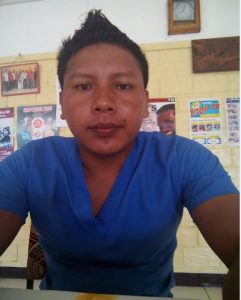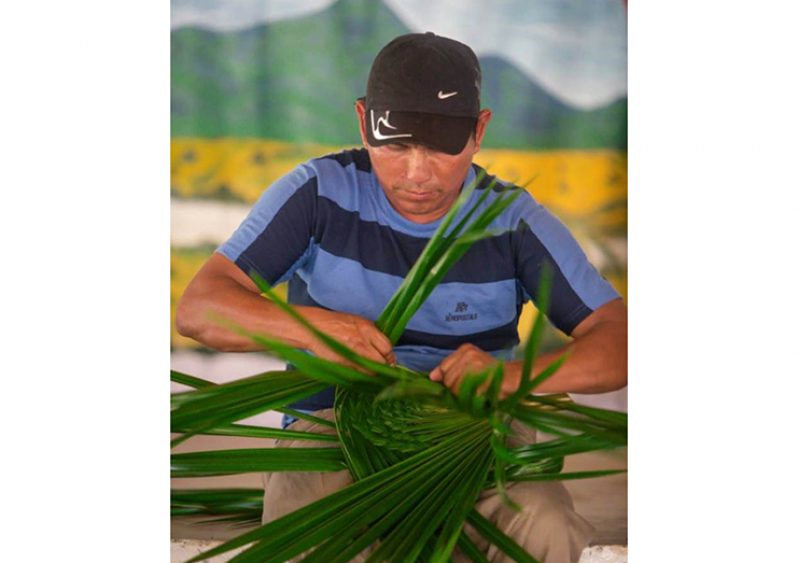– Indigenous communities looking forward to solar panel distribution
By Telesha Ramnarine

HAVING to deal with patients at the Aishalton District Hospital in the dead of night with no electricity can be quite challenging for the health workers there, and hence they are among those who welcome the solar panel distribution initiative that will see approximately 25,000 units being dispersed to various Amerindian villages.
Minister of Local Government and Regional Development, Nigel Dharamlall, told Guyana Chronicle recently that the solar panels are primarily for the indigenous villages, and will target facilities within those areas that especially have to do with health, education, ICT hubs, and even households.
“We have agreed, too, that those households whose batteries have been destroyed over the years will also receive some support,” the minister informed.
And the batteries are especially needed, Toshao for Katoonarib Village, Nicholas Cyril stated during an interview with this newspaper. “If you are giving the solar panels, you should also give the batteries,” he urged.
Katoonarib Village is located in South Central, Region Nine (Upper Takutu/Upper Essequibo), and the population is said to be growing. Therefore, an assessment may need to be done to determine which households do not have solar panels.
“The initiative will help children to study at nights; and when the indigenous people come from fishing and hunting, they would need to use light,” Cyril expressed, adding, “In these areas where we live, we mostly use firewood, some lamps, so this project will greatly help us.”
The village has Wifi and with schools out due to the pandemic, Cyril opined that those villagers with devices will be able to benefit. However, with most of them having no phones or tablets, he is especially looking forward to the restart of the ‘One Laptop per Family’ initiative.
As for Carl Croft, who hails from Aishalton Village, also situated in Region Nine, the units will especially prove effective to the health sector. He spoke from the standpoint of a Community Health Worker at the village hospital.
“Solar panels would be very effective in our community because we have a long, dry, sunny weather. And most of us do not have electricity. Sometimes we have patients at nights and we do not have light, so we will usually use our torchlight or phone when there is no light,” he explained about the dire need for such units in his village.
HIGHER GRADES

Meanwhile, Minister Dharamlall offered that the project is already in the implementation stage following President Irfaan Ali’s agreement with the Indian Government. “It’s basically that we did the planning, and it’s for the funding to happen now. The funding has already been initiated so it’s for the disbursement and so forth to take place.”
According to him, the solar panels would be of higher grades than was previously provided and will also have a longer shelf life. “It will not cost so much to maintain, and when I say solar panels I mean the system. The system consists of a panel and the batteries and so forth,” he explained.
The announcement of the 20 to 25,000 solar panels to the hinterland communities was announced in August by Public Works Minister Juan Edghill. He had explained that the project was accelerated following discussions between President Ali and India’s High Commissioner to Guyana, K. J. Srinivasa.
SOLAR PANELS AND EDUCATION
District Education Officer for the Mabaruma Sub Region, Marti De Souza, told Guyana Chronicle, on Friday, that, from an education perspective, the solar panel initiative is a plus, given that schools have not physically re-opened and children will be using whatever means necessary to continue learning.
“What it will mean for them is that they will have a steady flow of energy/electricity, and this is one of the concerns if we are to conduct any sort of teaching electronically. Looking at the Learning Channel, for example, if you do not have a steady flow of electricity, even if you have television, how do you get access?”

De Souza offered that solar energy will especially benefit those who are living along isolated, riverine communities. “It’s a move in the right direction. Education will stand to benefit. In Mabaruma here, we will be broadcasting audio lessons so having a radio on at all times would be good for the children, and even to charge their devices because if they are going to be interacting with their teachers to receive handouts via WhatsApp, energy is important.”
Karen Abraham, from Kato Village, also spoke from an education point of view. “I am thinking it would be good to give to households, but then again, if we are going to talk about virtual learning, I am thinking it would be good to equip all hinterland schools with solar electricity so that when this forum of learning is extended, they would have sufficient electricity to be able to provide power for projectors or television sets so as to use recorded lessons or videos to teach.”
Whether the government decides to give the units to families or equip the schools with them, Abraham believes that the project should start with the deep riverine communities which have no other means to acquire electricity.



.jpg)








